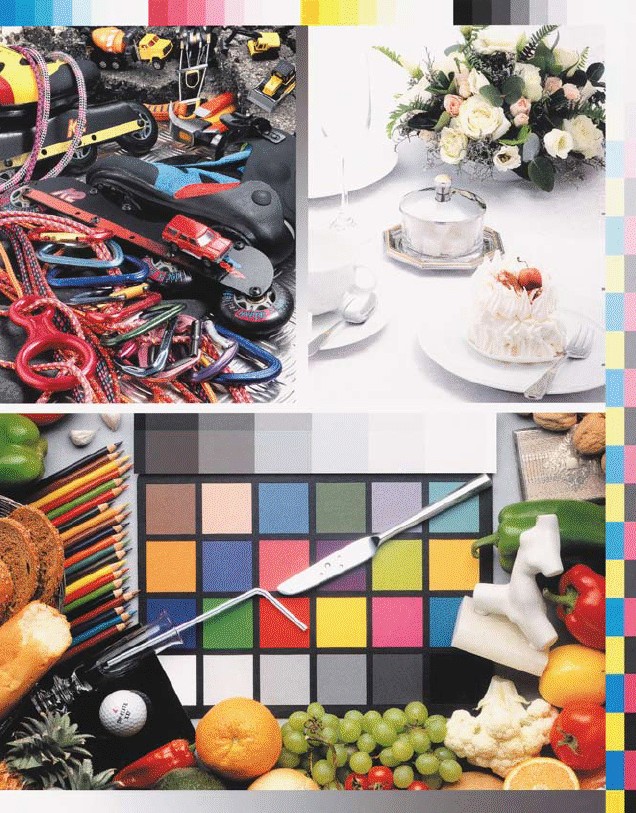- Relief printing
- Intaglio and planographic printing
- Color printing
- Bits and pieces
- Early photography in silver
- Non-silver processes
- Modern photography
- Color notes
- Color photography
- Photography in ink: relief and intaglio printing
- Photography in ink: planographic printing
- Digital processes
- Where do we go from here?
Calibration

Printer’s color halftone proof. Photographer unknown. Test image created for calibrating a prepress proofing system to a particular offset press. c. 2001. 11 3/8 x 8 1/2" (28.9 x 21.6 cm). The Museum of Modern Art, New York. Gift of Richard Benson. Over the past decade, the capacity of computers to handle ever larger amounts of data has risen sharply. One consequence is that today virtually all offset plates are directly exposed by computer-guided lasers, and stochastic screening methods have replaced the old halftone negatives in silver, eliminating all their complications.
This is a test image, used by offset printers to calibrate their scanning, file-tuning, plate-making, and presswork. We must accept the need for such images because virtually all printing done today in ink (and even in photographic labs) is digitally based, and this kind of printing cannot be done properly without careful technical controls. This is the great drawback to the digital revolution in photography and printing—that we must give up the old instinctive, seat-of-the-pants work habits of the traditional darkroom or pressroom and instead be willing to measure and codify visual data to ensure that things turn out the way we envision.
This is a terrible thing. Artists have always placed technique on a lesser level than visceral impulse; when they don’t they become craftsmen instead. The line between these two activities is soft and blurry, but the great technical prowess of the finest artists never obscures the fact that their work is valued because their craft carries something far more interesting than the craft itself. A work of art expresses the wisdom of the artist and the craft is the mechanism that brings this wisdom to physical form. This sounds like a bit of a tirade, but I emphasize it because the need to calibrate digital tools and obsessively measure their output is a tremendous obstruction to the artist’s work. Photographers have always faced this problem, because of the mechanical nature of their trade, but in black and white photography the best work has always been done with a minimum of technical complexity. The best photographers have always understood how their medium worked, but seldom was great photography done with gray cards and light meters. Exposures were made based upon experience joining feeling, and only when color-reversal materials came along did as basic a tool as the light meter become necessary. I sometimes even go so far as to say that no great black and white photograph was made with a light meter, unless it was being used to hold up the sagging bellows of an old view camera. This is an extreme point of view, but our test pattern should alert photographers and printers to the great danger lurking in technical controls: that calibration and measurement only have benefits when they connect to established standards, and standards of any sort run absolutely counter to the central tenet of art—that its richest ground is in the field of the unexpected and unpredictable.

